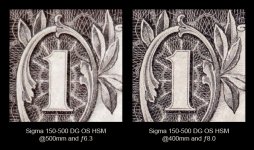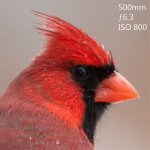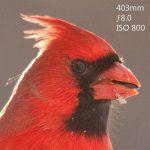alanrharris53
Well-known member
I have had the Tamron 200-500 for a few years and got some decent shots with it. But not being able to justify £6K for a canon lens and wanting faster AF and image stabilisation I thought the Sigma 150-500 might be better provided the IQ is similar.
I managed to get a second hand copy of the Sigma from someone on Birdforum and first impressions are quite positive. The weather has been too dark to make any comparison of IQ - hopefully I can do a more detailed comparison at the weekend. But one thing has puzzled me.
Taking a photos of the same object from the same position with both lenses set at 500mm on the same body the Tamron appears to be about 5-10%"longer".
So is the Sigma really a 500mm lens or is the Tamron actually going beyond 500mm.
Or am I missing something somewhere and being a plonker?
I managed to get a second hand copy of the Sigma from someone on Birdforum and first impressions are quite positive. The weather has been too dark to make any comparison of IQ - hopefully I can do a more detailed comparison at the weekend. But one thing has puzzled me.
Taking a photos of the same object from the same position with both lenses set at 500mm on the same body the Tamron appears to be about 5-10%"longer".
So is the Sigma really a 500mm lens or is the Tamron actually going beyond 500mm.
Or am I missing something somewhere and being a plonker?







